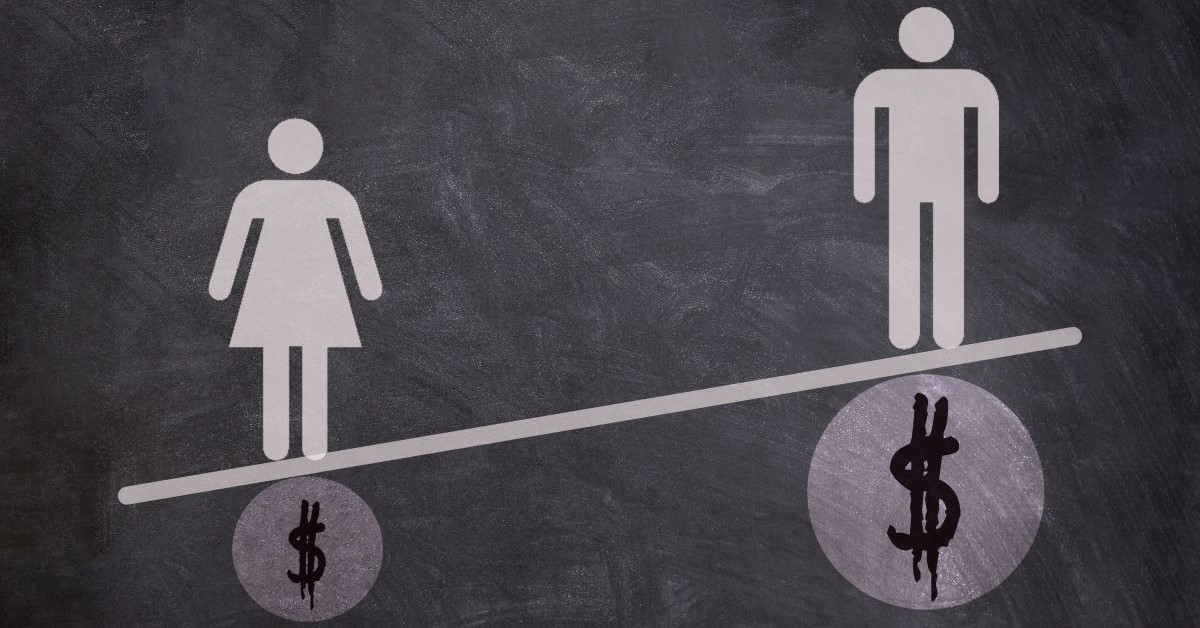CHEQ is trusted by more than 15,000 companies — from the Fortune 50 to emerging disruptors — to enable and protect each critical touchpoint in the evolving, human-AI customer journey. Powered by the only integrated Traffic, Threat, and Identity Intelligence Engine, CHEQ distinguishes legitimate users from bad actors — human, AI agent, or bot — and, in real-time, delivers granular, context-specific insights to marketing, commerce, and security platforms. With a best-in-class
Tag: Dollar
-

Dollar Tree and the Rising Cost of Survival
While Wall Street celebrates record highs, Main Street grapples with rising costs that strain household budgets. Dollar Tree, once synonymous with affordability, has seen its pricing structure evolve significantly. In 2021, the company increased its baseline price from $1 to $1.25, and by 2025, introduced items priced up to $10 in select stores.
For residents in food deserts—areas with limited access to affordable and nutritious food—stores like Dollar Tree serve as essential sources for groceries. However, these stores often stock predominantly ultra-processed foods, contributing to dietary challenges. A study by Tufts, Harvard, and the USDA found that while dollar store food purchases scored low on the Healthy Eating Index, households shopping there didn’t significantly differ in overall diet quality from those shopping primarily at grocery stores.
The expansion of dollar stores in low-income communities has been linked to exacerbating food insecurity. These stores often lack fresh produce and healthy staples, leading to diets high in processed foods. Research indicates that small food retailers are less likely than supermarkets to sell healthy staple foods, further entrenching food insecurity in these areas.
Despite the financial gains reflected in the stock market, the affordability gap widens for working-class families. Economic gains at the top do not trickle down to the communities that need them most. As investment portfolios swell, the affordability gap grows, and the promise of basic necessities remains increasingly out of reach. For working-class families and those living in under-resourced neighborhoods, the soaring market feels less like a sign of prosperity and more like a reminder of growing inequality.
In addition to rising costs, recent changes to the Supplemental Nutrition Assistance Program (SNAP) are further impacting low-income households. A new law backed by the Trump administration and signed in July 2025 is set to reduce SNAP benefits for 2.4 million Americans by expanding work requirements to additional groups, including parents of children aged 14 and up, adults aged 55–64, veterans, former foster youth, and homeless individuals. The legislation requires these groups to work, volunteer, or participate in job training for at least 80 hours per month to qualify. This expansion is expected to shift more costs to states and redistribute resources, increasing income for middle- and high-income households while reducing benefits for low-income households.
The Center on Budget and Policy Priorities (CBPP) notes that people in food-insecure households spend roughly 45% more on medical care annually than those in food-secure households. SNAP participation has been linked to improved health outcomes and reduced healthcare costs. For instance, early access to SNAP among pregnant mothers and in early childhood improved birth outcomes and long-term health as adults. Elderly SNAP participants are less likely than similar non-participants to forgo their full prescribed dosage of medicine due to cost.
The reduction or loss of SNAP benefits can lead to increased food insecurity and poorer health outcomes. A study published in Health Affairs found that the loss of SNAP benefits was associated with food insecurity and poor health in working families with young children. The study indicated that reduced benefits were associated with greater odds of fair or poor caregiver and child health.
As the affordability gap widens and access to essential resources becomes more challenging, the combination of rising costs and reduced support systems underscores the growing inequality faced by working-class families and communities in need.
Sources:
-

University of Michigan scraps multimillion dollar DEI investment
This audio is auto-generated. Please let us know if you have feedback.Dive Brief:
- The University of Michigan has scrapped its multimillion dollar university-wide strategic plan to promote diversity, equity and inclusion amid increasing pressure from the Trump administration on the sector.
- With the move, the public flagship shuttered two equity-focused offices — its Office of Diversity, Equity and Inclusion and Office for Health Equity and Inclusion — and ended all DEI programming and spending, according to the Thursday announcement.
- The student services provided by the DEI office will be housed under different unnamed departments. And employees who led DEI efforts will “refocus their full effort on their core responsibilities,” university leadership said. They did not say if the restructuring would result in layoffs.
Dive Insight:
In Thursday’s announcement, President Santa Ono and other university leaders cited President Donald Trump’s flurry of executive orders attacking DEI efforts and the U.S. Department of Education’s resulting Dear Colleague letter.
Many universities across the country have already caved under the Trump administration’s pressure. But the University of Michigan’s compliance represents a significant victory for the White House.
In fall 2023, the public flagship launched its DEI 2.0 Strategic Plan, a five-year blueprint even longer in the making.
“The university’s DEI efforts are a perpetual work in progress, and we are committed to this ongoing journey and one where we never reach our destination,” the plan’s webpage said. It describes the plan as a “campuswide effort engaging all levels of the university”
In total, the university spent some $250 million dollars on diversity efforts, according to Regent Jordan Acker.
But Acker and other critics have argued that the investment did not result in the desired outcome.
“The population of minority students at UM has grown little — and much of the resources we’ve devoted to these efforts has gone into administrative overhead, not outreach to students,” he said in a Thursday statement on social media.
Before the launch of the university’s first DEI strategic plan, it faced a years-long struggle boosting Black enrollment, to the dissatisfaction of students and administration alike.
In 2023, 14.1% of Michigan residents were Black, according to federal data. That fall, just 4.6% of the university’s students were Black.
Acker described the elimination of the university’s DEI efforts as a means of focusing resources on programs of “real impact,” such as the university’s Go Blue Guarantee, which offers free and reduced tuition to qualifying Michigan residents.
In its announcement this week, the university spotlighted Go Blue and its Wolverine Pathways program — which works with K-12 students in under-resourced communities — when touting its student successes.
Among undergraduates, first-generation students have increased 46% and Pell Grant recipients by about 32% since 2016, university leaders said Thursday, attributing the growth to those two programs.
The University of Michigan also said Thursday it will expand another student success program designed for undergraduates who are former foster care youths or are “navigating their educational journey without the support of their parents or guardians.”
Because those initiatives do not explicitly mention diversity or race, they are set to survive the university’s purge of programs.
Not all will be so lucky.
Among its many DEI programs, the University of Michigan oversees the National Center for Institutional Diversity, the Diversity Scholars Network, and a public safety task force dedicated to addressing structural racism in policing.
The university’s general counsel will be conducting an “expedited review” of all institutional policies, programs and practices to ensure compliance with the Trump administrations’ orders, according to Thursday’s announcement.
Additionally, all departments are expected to ensure their webpages are in compliance and “reflect the status of current programmatic directions” at the university.
“These decisions have not been made lightly,” Ono said Thursday. “We recognize the changes are significant and will be challenging for many of us, especially those whose lives and careers have been enriched by and dedicated to programs that are now pivoting.”
Additionally, the university’s Alumni Association this month ended LEAD Scholars, a 16-year-old merit scholarship for admitted students who exemplify “leadership, excellence, achievement, and diversity.” The group cited the same federal pressures as university leaders.
In an email Thursday, the head of the university’s faculty senate called the move to dismantle DEI infrastructure an “assault on the democratic values of public education and attacks on marginalized students, staff, and faculty.”
Senate Chair Rebekah Modrak lambasted the Trump Administration as using “the power of the government to engineer a sweeping culture change towards white supremacy.”
“Unfortunately, University of Michigan leaders seem determined to comply and to collaborate in our own destruction,” she said. “There are legal recourses that the university and university associations can and must take.”
The faculty senate held a closed emergency meeting Friday for university employees and students to discuss next steps.
This isn’t the first move against DEI the university has taken.
In December, the University of Michigan eliminated the use of diversity statements from the hiring, promotion or tenure processes. A faculty working group recommended the change, but it also advised the university to ask instructors to incorporate information about their DEI efforts into their teaching, research and service statements.
Michigan’s administration did not enact the second recommendation at the time, and such actions are now banned following Thursday’s announcement.
Sarah Hubbard, a regent on the University of Michigan’s board and a consistent opponent of DEI efforts, praised the cancellations.
“Ending DEI programs will also allow us to better expand diversity of thought and free speech on our campus. The end of litmus test hiring and curtailment of speech stops now,” Hubbard said in a Thursday social media post.
-

Equal Pay Day Data: On Average, Women in Higher Ed Are Paid 82 Cents on the Dollar
by Christy Williams | March 5, 2025
Since 1996, the National Committee on Pay Equity has acknowledged Equal Pay Day to bring awareness to the gap between men’s and women’s wages. This year, Equal Pay Day is March 25 — symbolizing how far into the year women must work to be paid what men were paid in the previous year.
To help higher ed leaders understand, communicate and address gender pay equity in higher education, CUPA-HR has analyzed its annual workforce data to establish Higher Education Equal Pay Days for 2025. Tailored to the higher ed workforce, these dates observe the gender pay gap by marking how long into 2025 women in higher ed must work to make what White men in higher ed earned the previous year.
Higher Education Equal Pay Day falls on March 8, 2025, for women overall, which means that women employees in higher education worked for more than two months into this year to gain parity with their White male colleagues. Women in the higher ed workforce are paid on average just 82 cents for every dollar a White man employed in higher ed makes.
Highlighting some positive momentum during this Women’s History Month, some groups of women are closer to gaining pay equity. Asian American women in higher ed worked only a few days into this year to achieve parity on January 4 — an encouraging jump from January 14 in 2024.
But the gender pay gap remains for most women, and particularly for women of color. Here’s the breakdown of the gender pay gap in the higher ed workforce, and the Higher Education Equal Pay Day for each group.* These dates remind us of the work we have ahead.
- March 8 — Women in Higher Education Equal Pay Day. On average, women employees in higher education are paid 82 cents on the dollar.
- January 4 — Asian Women in Higher Education Equal Pay Day. Asian women in higher ed are paid 99 cents on the dollar.
- March 5 — White Women in Higher Education Equal Pay Day. White women in higher ed are paid 83 cents on the dollar.
- March 29 — Native Hawaiian/Pacific Islander Women in Higher Education Equal Pay Day. Native of Hawaii or Pacific Islander women in higher ed are paid 76 cents on the dollar.
- April 4 — Black Women in Higher Education Equal Pay Day. Black women in higher ed are paid 75 cents on the dollar.
- April 11 — Hispanic/Latina Women in Higher Education Equal Pay Day. Hispanic/Latina women in higher ed are paid 73 cents on the dollar.
- April 24 — Native American/Alaska Native Women in Higher Education Equal Pay Day. Native American/Alaska Native women are paid just 69 cents on the dollar.
CUPA-HR research shows that pay disparities exist across employment sectors in higher ed — administrators, faculty, professionals and staff — even as the representation of women and people of color has steadily increased. But with voluntary turnover still not back to pre-pandemic levels, not addressing pay disparities could be costly.
CUPA-HR Resources for Higher Education Equal Pay Days
As we observe Women’s History Month and Higher Education Equal Pay Days for women, we’re reminded that the quest for equal pay is far from over. But data-driven analysis with the assistance of CUPA-HR research can support your work to create a more equitable future.
CUPA-HR’s interactive graphics track the gender and racial composition of the higher ed workforce, based on data from CUPA-HR’s signature surveys. The following pay equity analyses control for position, indicating that any wage gaps present are not explained by the fact that women or people of color may have greater representation in lower-paying positions:
*Data Source: 2024-25 CUPA-HR Administrators, Faculty, Professionals, and Staff in Higher Education Surveys. Drawn from 707,859 men and women for whom race/ethnicity was known.
-

CUPA-HR’s Equal Pay Day Data for Higher Education: Women in Higher Ed Are Paid Just 82 Cents on the Dollar, Most Women of Color Are Paid Even Less – CUPA-HR
by Julie Burrell | March 12, 2024
Since 1996, the National Committee on Pay Equity has acknowledged Equal Pay Day to bring awareness to the gap between men’s and women’s wages. This year, Equal Pay Day is March 12 — symbolizing how far into the year women must work to be paid what men were paid in the previous year.
To help higher ed leaders understand, communicate and address gender pay equity in higher education, CUPA-HR has analyzed its annual workforce data to establish Higher Education Equal Pay Days for 2024. Tailored to the higher ed workforce, these dates observe the gender pay gap by marking how long into 2024 women in higher ed must work to make what White men earned the previous year.
Higher Education Equal Pay Day fell on March 5, 2024, for women overall, which means that women employees in higher education worked for more than two months into this year to gain parity with their White male colleagues. Women in the higher ed workforce make on average just 82 cents for every dollar a White male employed in higher ed makes.
Highlighting some positive momentum during this Women’s History Month, some groups of women are closer to gaining pay equity. Asian American women in higher ed worked two weeks into this year to achieve parity on January 14 — not ideal, but by no means insignificant. In fact, during the academic year 2022-23, Asian American women administrators in particular saw better pay equity than most other groups, according to CUPA-HR’s analysis.
But the gender pay gap remains for most women, and particularly for women of color. Here’s the breakdown of the gender pay gap in the higher ed workforce, and the Higher Education Equal Pay Day for each group.* These dates remind us of the work we have ahead.
- March 5 — Women in Higher Education Equal Pay Day. On average, women employees in higher education are paid 82 cents on the dollar.
- January 14 — Asian Women in Higher Education Equal Pay Day. Asian women in higher ed are paid 96 cents on the dollar.
- March 1 — White Women in Higher Education Equal Pay Day. White women in higher ed are paid 83 cents on the dollar.
- March 12 — Native Hawaiian/Pacific Islander Women in Higher Education Equal Pay Day. Native of Hawaii or Pacific Islander women in higher ed are paid 80 cents on the dollar.
- March 28 — Black Women in Higher Education Equal Pay Day. Black women in higher ed are paid 76 cents on the dollar.
- April 12 — Hispanic/Latina Women in Higher Education Equal Pay Day. Hispanic/Latina women in higher ed are paid 72 cents on the dollar.
- April 22 — Native American/Alaska Native Women in Higher Education Equal Pay Day. Native American/Alaska Native women are paid just 69 cents on the dollar.
CUPA-HR research shows that pay disparities exist across employment sectors in higher ed — administrators, faculty, professionals and staff — even as the representation of women and people of color has steadily increased. But with voluntary turnover rising, not addressing pay disparities could be costly.
CUPA-HR Resources for Higher Education Equal Pay Days
As we observe Women’s History Month and Higher Education Equal Pay Days for women, we’re reminded that the fight for equal pay is far from over. But data-driven analysis with the assistance of CUPA-HR research can empower your fight for a more equitable future.
See our interactive graphics that track gender and racial composition, as well as pay, of administrative, faculty, professional, and staff roles, collected from CUPA-HR’s signature surveys:
*Data Source: 2023-24 CUPA-HR Administrators, Faculty, Professionals, and Staff in Higher Education Surveys. Drawn from 633,020 men and women for whom race/ethnicity was known.

![Protecting Every Marketing Dollar: How Collegis Helped Block $2.2M in Ad Waste with CHEQ [CASE STUDY]](https://blog.college-counseling.com/wp-content/uploads/2025/10/Protecting-Every-Marketing-Dollar-How-Collegis-Helped-Block-22M-in.png)